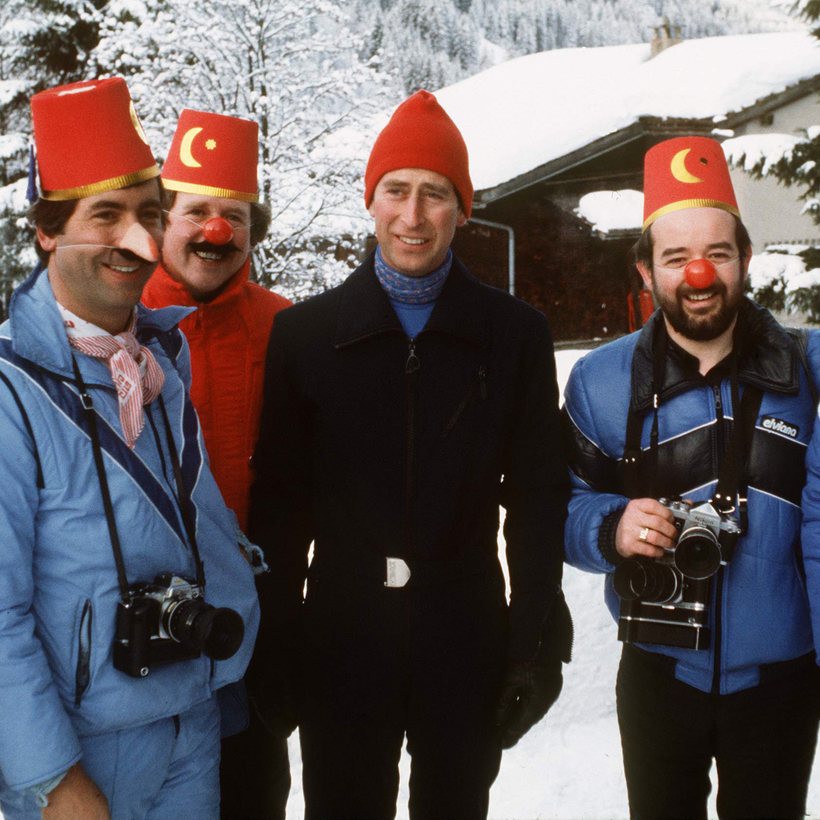First things first: it was Charles.
You will remember that, back in March, when these things seemed slightly more important, Oprah Winfrey interviewed Prince Harry and Meghan Markle about their bombshell departure from the royal family. Several claims made during the interview have subsequently been disproved—no, the Archbishop of Canterbury didn’t marry the couple in private three days before their televised wedding; no, their son, Archie, wasn’t denied a royal title on grounds of race.
But another claim took on a thrillingly mysterious status. At one point in the interview, Markle revealed to Winfrey that a senior royal had “concerns and conversations about how dark [Archie’s] skin might be when he’s born.” Prince Harry then added, “That conversation, I’m never going to share.... It was awkward. I was a bit shocked.” Who, exactly, was the royal racist?

Well, good news: Harry can stick to his word about never sharing anything, because Christopher Andersen’s new royal biography, Brothers and Wives: Inside the Private Lives of William, Kate, Harry, and Meghan, has done it for him.
And now for the less good news: It was his dad. “I wonder what the children will look like,” Prince Charles reportedly said over breakfast one morning. After being reassured by his wife, Camilla, that any child of Harry and Meghan would be “gorgeous,” Charles doubled down on his query. “I mean … what do you suppose their children’s complexion might be?”
There we are. Mystery solved. Good luck dealing with the fallout, Your Highness.
Somehow this isn’t even the most surprising of Andersen’s revelations about Charles. There is his disappointed reaction to Prince Harry’s birth, as he found himself increasingly preoccupied with the baby’s “rusty” hair, largely because it was the same color as Princess Diana’s then lover, James Hewitt.

And then, incredibly, there is also the claim that—on two separate occasions—Charles was driven to such rage that he was able to tear a bathroom sink from its base with his bare hands. This is proof that either the standard of plumbing in the royal residences is dangerously substandard or that Prince Charles has the strength of 10 men.
Forget becoming the next British sovereign—the man could earn a very comfortable living pulling trucks with his teeth at provincial carnivals.
“I wonder what the children will look like,” Prince Charles reportedly said over breakfast one morning.
While the book ostensibly promises to delve inside the private lives of the princes and their wives, its one downside is that the women barely even manage to get a look-in. It’s 150 pages in before we meet Kate Middleton, another 41 before her wedding, and—aside from an opening chapter that’s hard to see as anything other than bait and switch—Meghan Markle isn’t properly introduced until 85 pages from the end of the book.
This last part seems especially curious. Andersen races through the entire sweep of Meghan and Harry’s story—first meeting, wedding, Megxit, lawsuit, children, the lot—with the hurried clap of a writer two months past deadline.

You could fill entire books with that stuff. In fact, people have filled entire books with it—Carolyn Durand and Omid Scobie’s Finding Freedom went much further into the nitty-gritty of that particular timeline, although in Andersen’s defense he wasn’t assisted by a 31-point briefing note reportedly secretly written by Meghan herself and passed to him through an intermediary, as Durand and Scobie apparently were.
What Brothers and Wives does offer, though, is context. Heaps of it. As you’d expect from the author of previous books entitled Diana’s Boys, The Day Diana Died, and After Diana, there is an absolute truckload of Princess Diana content here. And while it may not be particularly timely, it is still a handy reminder that William and Harry never really stood a chance.
Forget becoming the next British sovereign—the man could earn a very comfortable living pulling trucks with his teeth at provincial carnivals.
The book’s opening third is full of lurid stories about the galloping calamity that was Charles and Diana’s marriage, with the children being miserably ricocheted between parents who, respectively, had too many boundaries and not nearly enough of them. By the third or fourth time you’ve read about the young princes watching their mother and father scrapping it out in the media from the isolated misery of boarding school, it’s clear that the prospect of them achieving any form of personal happiness seems downright absurd.
Whether intentionally or not—and you’d suspect not, given Andersen’s enthusiasm for the subject—Brothers and Wives offers one of the most compelling arguments yet for the dismantlement of the monarchy.

This is a book about a number of supremely unhappy people trapped in a system designed to destroy them. Meghan claims she harbors dark thoughts about ending her life. Diana, following an argument with her husband, literally throws herself down a flight of stairs at the Queen. William, too, it is revealed, quite recently fell into a deep depression flecked with suicidal ideation. Harry’s in therapy. Charles has been in therapy. Princess Margaret, that great brick wall of unbridled stoicism, even sought counseling at one point.
For all the modern royal family’s work in the field of promoting better mental health, you sense that the best cure for their malaise would be to simply bulldoze the palaces and let them all work in retail like the rest of us.
Brothers and Wives: Inside the Private Lives of William, Kate, Harry, and Meghan, by Christopher Andersen, is out now from Gallery Books
Stuart Heritage is a Kent, U.K.–based Writer at Large for AIR MAIL


